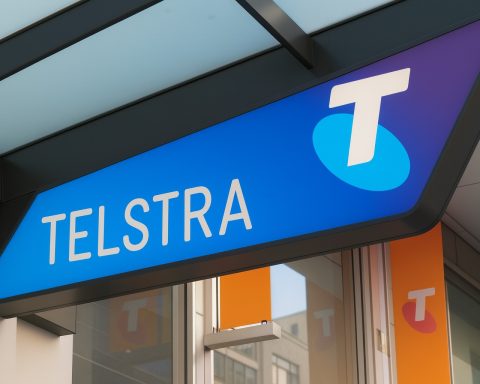Market snapshot: FIG trades near record lows despite hypergrowth
Figma, Inc. (NYSE: FIG) is ending the week under heavy pressure. As of Friday’s close on November 14, the design‑software company’s stock finished at $38.53, marking a new 12‑month low and sitting roughly 73% below its recent 52‑week high of $142.92. [1]
Even after the sell‑off, FIG still trades modestly above its July IPO price of $33, leaving early public investors slightly in the green while erasing much of the post‑IPO euphoria. [2] Figma’s current market capitalization hovers around $19–20 billion, according to multiple real‑time quote services. [3]
Today’s Figma headlines fall into two buckets:
- A wave of insider stock sales that totals roughly $20 million as FIG trades at fresh lows. [4]
- Strategic AI expansion in Israel, where Figma’s acquisition of video‑AI startup Weavy is highlighted as part of a broader U.S. push for next‑gen AI talent. [5]
Against this backdrop, the company is also coming off the strongest quarter in its history, with revenue up 38% year over year and full‑year guidance raised. [6]
1. Insider selling: $20M in stock offloaded near the lows
The most eye‑catching development for FIG shareholders this weekend is the scale and timing of recent insider transactions.
A fresh report published today by CoinCentral notes that Figma executives have sold more than $20 million worth of stock in early November, just as the share price slid toward a 12‑month low. [7] Regulatory filings and secondary coverage add important detail:
- CFO Praveer Melwani
- Sold 53,624 shares between November 3 and 12, including 14,532 shares at an average price of $43.47 on November 10.
- His sales across this period total roughly $2.4 million, trimming his stake by under 1% while leaving him with more than 1.6 million shares. [8]
- CRO Shaunt Voskanian
- Executed a single, much larger sale of 403,335 shares on November 10 at about $43.39, worth roughly $17.5 million, cutting his stake by nearly 20%. [9]
- General Counsel Brendan Mulligan
- A new MarketBeat piece dated November 15 reports that Mulligan sold 80,934 shares on November 10 at an average of $43.47, for proceeds of about $3.5 million. [10]
- Additional smaller sales on November 3 and 12 bring his November disposals to just under 100,000 shares, reducing his holdings by a little over 8%. [11]
- Chief Product & AI leadership
- A Futu Niuniu alert this week highlights that Kris Rasmussen, a senior product leader at Figma, sold 304,500 shares on November 10 and 12 at an average price of about $43.63, totaling roughly $13.3 million. [12]
All of these transactions are drawn from Form 4 insider filings submitted to the U.S. SEC, and they paint a picture of broad‑based selling at prices more than 10% above where FIG closed on Friday. [13]
Importantly, these sales do not automatically signal that insiders are bearish on Figma’s long‑term prospects. Executives often sell after lock‑ups expire or as part of pre‑scheduled 10b5‑1 plans, especially when IPO‑related stock‑based compensation has driven their holdings to concentrated levels. Still, the optics of heavy selling while the share price is collapsing have clearly caught investors’ attention.
2. AI push to Israel: Figma’s Weavy acquisition in the spotlight
While insiders are cashing out a slice of their holdings, Figma is simultaneously doubling down on AI — and on Israel.
A feature story published today by Israeli tech outlet CTech places Figma alongside Salesforce and HubSpot as global software companies scrambling to lock in early‑stage AI startups from Israel’s rapidly growing ecosystem. In the piece, the acquisitions of Doti AI (Salesforce), Weavy (Figma), and XFunnel (HubSpot) are framed as part of a strategic land‑grab for “next‑gen AI talent.” [14]
Figma’s role in that story centers on its purchase of Weavy, a one‑year‑old Israeli startup:
- CTech previously reported that Figma agreed to acquire Weavy for “over $200 million”, making it the company’s largest deal to date. [15]
- Weavy has built a platform that combines access to video AI models with advanced video‑editing tools, which Figma plans to integrate into its broader design suite. [16]
- As part of the deal, Figma will establish a new R&D center in Tel Aviv, while maintaining the Weavy brand and continuing to sell its product independently in the near term. [17]
Figma’s own Q3 2025 earnings release confirms the acquisition and notes that Weavy will be branded Figma Weave, bolstering image, video, and motion‑design generation and editing across the Figma platform. [18]
For investors, today’s CTech coverage is a reminder that Figma’s AI roadmap is not limited to in‑house tools like Figma Make and Figma Buzz, but also relies on acquiring specialized startups in high‑growth niches like video and multimodal content. [19]
3. Q3 2025: record revenue and raised guidance
The striking thing about Figma’s recent share‑price collapse is that it comes in the wake of record financial results.
On November 5, Figma reported third‑quarter 2025 earnings and simultaneously raised its full‑year outlook. Key numbers from the company’s official release and subsequent Reuters coverage include: [20]
- Revenue:
- $274.2 million, up 38% year over year, above the company’s own guidance range and setting a new quarterly record.
- Implies an annualized revenue run‑rate above $1 billion for the first time.
- Profitability & cash flow:
- GAAP operating loss of about $1.1 billion, driven largely by a one‑time $975.7 million stock‑based compensation charge tied to the IPO.
- On a non‑GAAP basis, Figma delivered $34 million in operating income (a 12% margin) and $62.4 million in net income, with $49 million in adjusted free cash flow (18% margin). [21]
- Customer metrics:
- 12,910 paying customers generating more than $10,000 in ARR, adding over 1,000 such customers in the quarter.
- 1,262 customers spending more than $100,000 annually, up by more than 140 accounts quarter over quarter.
- Net dollar retention for customers with over $10,000 in ARR ticked up to 131%. [22]
- Guidance:
- Q4 2025 revenue forecast raised to $292–294 million, implying about 35% year‑over‑year growth at the midpoint.
- Full‑year 2025 revenue guidance raised to $1.044–1.046 billion, targeting about 40% growth over 2024. [23]
Figma also highlighted rapid adoption of AI‑powered products, including:
- Figma Make, a prompt‑to‑app tool that can generate functional prototypes from natural‑language descriptions.
- A new MCP server and other AI features for design systems and development handoff.
- A partnership with OpenAI to bring a Figma app into ChatGPT, allowing diagrams and flows to be generated directly from conversation and then edited in FigJam. [24]
On fundamentals alone, it was “the best quarter in Figma’s history,” as CEO Dylan Field put it in the company’s earnings release. [25] Yet the stock has moved sharply in the opposite direction.
4. Why is FIG falling so hard?
Multiple research notes and media analyses over the past two months offer clues as to why FIG has been so volatile despite strong top‑line growth.
- Valuation reset after a “priced for perfection” IPO
- A September analysis in Forbes pointed out that even after a sharp pullback, Figma was still trading at a lofty price‑to‑sales multiple relative to slower‑growing software peers, leaving little room for error as growth moderates from the post‑IPO spike. [26]
- A Reuters story in August described a 23% single‑day slide shortly after the IPO amid profit‑taking, noting that shares had already fallen more than 60% from their early peak by that time. [27]
- Growth deceleration and margin pressure concerns
- Zacks has published a series of notes on FIG, most recently highlighting that the stock is down over 30% in the last month and about 56% since going public, attributing the weakness to “slowing growth, stiff competition and margin pressure” despite strong AI‑driven product expansion. [28]
- Heavy stock‑based compensation and dilution
- A recent Seeking Alpha piece flags Figma’s large one‑time IPO‑related stock‑comp expense and ongoing share‑based pay as reasons for caution, arguing that dilution could weigh on per‑share metrics even if the business grows rapidly. [29]
- Lock‑up expiry overhang
- Figma’s Investor Relations site and several news summaries note that a substantial portion of insider and pre‑IPO investor shares became eligible for sale in early November, creating a natural window for profit‑taking and liquidity events — precisely when the heavy insider selling we’re now seeing took place. [30]
Social‑media chatter has amplified the narrative. Threads and X posts widely circulating this weekend note that FIG shares are now down around 67% from IPO‑day highs, and would need to nearly triple to revisit those early levels. [31]
In short, Figma is experiencing a classic post‑IPO hangover:
- A richly valued stock,
- A flood of newly unlocked shares, and
- A series of high‑profile insider sales,
all colliding at the same time that macro sentiment toward high‑multiple software has turned cautious.
5. How today’s news fits into the bigger Figma story
For investors and observers following Figma on November 16, today’s headlines carry several important takeaways:
a) Insider selling is substantial — but context matters
The roughly $20 million sold by senior executives in early November is significant in absolute terms, and the timing—near a new low—is uncomfortable optics. [32]
However, even after these sales, top leaders still hold large stakes that tie their personal wealth to the company’s long‑term performance. Many of the disposals likely relate to:
- Lock‑up expirations,
- Diversification after years of illiquid buildup, and
- Pre‑arranged selling plans set well before FIG’s recent slide.
Investors typically watch insider trends over multiple quarters rather than a single window before drawing firm conclusions.
b) The AI strategy is expanding, not retreating
Today’s CTech article underlines that Figma is aggressively investing in AI, not pulling back:
- Weavy / Figma Weave brings video‑centric generative AI into the heart of the platform. [33]
- A new Tel Aviv R&D center broadens Figma’s global footprint and taps into one of the world’s deepest AI talent pools. [34]
Combined with product launches like Figma Make, Figma Draw, Figma Buzz, and enhanced design‑system tooling unveiled at Schema 2025, Figma continues to position itself as an AI‑native platform for the entire product‑development lifecycle. [35]
c) Fundamentals remain strong — but expectations are still high
Despite the stock’s decline, the underlying business is:
- Growing revenue near 40% year over year,
- Generating positive non‑GAAP earnings and free cash flow, and
- Serving a base of large, sticky customers with 130%‑plus net‑dollar retention. [36]
That said, even after falling more than 70% from its peak, Figma still commands a premium valuation versus many established software peers — a point echoed by both bullish and cautious analyst notes. [37]
6. What to watch next
Looking ahead from today’s developments, here are the key catalysts and questions around Figma:
- Execution on AI and Weavy integration
- How quickly can Figma bring Weavy / Figma Weave functionality into its core design, prototyping, and marketing workflows, and will those features drive upsell to higher‑tier plans? [38]
- Customer growth and net retention in Q4 and beyond
- With Figma now above $1 billion in revenue run‑rate, the pace of large‑customer additions and net‑dollar retention will be critical to sustaining its premium multiple. [39]
- Insider activity in coming months
- If insider selling continues at the current clip well past lock‑up windows, markets may interpret that as a more negative signal. Conversely, stabilization or insider buying could help rebuild confidence. [40]
- Market sentiment toward high‑growth, AI‑native software
- Broader appetite for growth stocks — especially ones with heavy stock‑based compensation and still‑elevated valuations — will influence how quickly FIG can recover from its current drawdown. [41]
For now, November 16, 2025 will likely be remembered as the day when two narratives about Figma collided:
- A powerful growth and AI‑expansion story,
- And an uncomfortable wave of insider selling at the bottom of a steep post‑IPO slide.
How those threads resolve over the next few quarters will determine whether FIG’s current level proves to be a value opportunity or merely a rest stop on a longer downtrend.
References
1. www.investing.com, 2. www.figma.com, 3. www.kraken.com, 4. coincentral.com, 5. www.calcalistech.com, 6. investor.figma.com, 7. coincentral.com, 8. coincentral.com, 9. coincentral.com, 10. www.marketbeat.com, 11. www.marketbeat.com, 12. news.futunn.com, 13. www.publicnow.com, 14. www.calcalistech.com, 15. www.calcalistech.com, 16. www.calcalistech.com, 17. www.calcalistech.com, 18. investor.figma.com, 19. www.figma.com, 20. investor.figma.com, 21. investor.figma.com, 22. investor.figma.com, 23. investor.figma.com, 24. www.reuters.com, 25. investor.figma.com, 26. www.forbes.com, 27. www.reuters.com, 28. finance.yahoo.com, 29. seekingalpha.com, 30. www.stocktitan.net, 31. www.threads.com, 32. coincentral.com, 33. www.calcalistech.com, 34. www.calcalistech.com, 35. www.figma.com, 36. investor.figma.com, 37. www.forbes.com, 38. www.calcalistech.com, 39. investor.figma.com, 40. coincentral.com, 41. www.forbes.com








